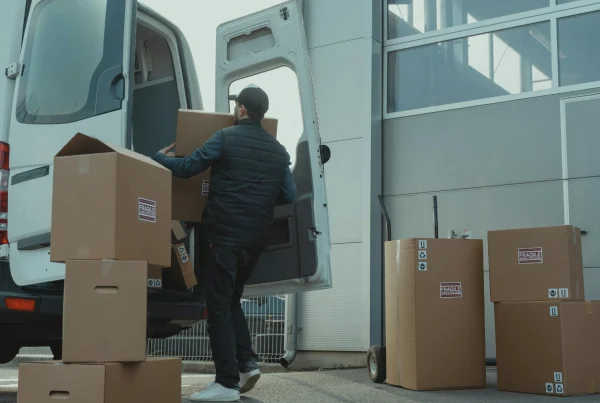Choosing the right production strategy is crucial for your business’s success. Two of the most popular methods are Make-to-Order (MTO) and Make-to-Stock (MTS). But which one is right for you?
Many businesses today use a hybrid approach, blending MTO and MTS to meet their specific needs. Whether you’re starting with MTO and considering MTS, or vice versa, understanding how each process works is essential for making informed decisions. Read on to discover which strategy best fits your business requirements.
What is Make to Order?
Make-to-Order (MTO) is a production strategy. It means that items are made only after a customer places an order. This is very different from traditional retail models. Normally, products are produced in advance and stored until sold. But with MTO, nothing is created until there’s confirmed demand. Each item is made specifically to meet the customer’s request.
MTO is also known as the “Pull Method.” This means the customer’s order pulls the item into production. The product doesn’t exist until the customer requests it. It’s a production system driven by real demand. This is the opposite of the “Push Method.” In that method, businesses produce products in bulk and store them, hoping they will sell.
MTO can be seen with products like customized apparel or personalized gifts. For example, a customer may order a specific size, color, or design that isn’t available in-store. The product is then made based on their unique choices. The item doesn’t exist until the customer places their order.
This type of production allows for high customization. Each item is tailored to fit the customer’s needs. Think about online stores that offer custom t-shirts, personalized accessories, or made-to-measure clothing. These businesses only produce the item after the customer makes their selection.
With MTO, the process may take longer than simply buying from stock. However, the customer gets exactly what they want. This method allows retailers to offer unique products. It also helps manage inventory better, as nothing is made without demand.
MTO requires good coordination between teams. Sales, production, and suppliers need to work closely to meet customer expectations. Any miscommunication can delay the process. But when done well, MTO ensures that each product is made to meet the customer’s exact needs.
MTO is becoming more popular as customers want personalized experiences. People want items that feel unique to them. Retailers using MTO can offer this, helping them stand out in the market.
Advantages of Make-to-Order Manufacturing
Customization
With MTO, retailers can offer personalized products. Every item is made to fit the customer’s exact needs. This gives shoppers a unique experience. They feel like the product was made just for them.
Less Inventory Waste
Since products are made only after an order is placed, there’s no need to store unsold stock. This reduces the risk of unsold inventory piling up. Retailers only produce what is needed, lowering waste and storage costs.
Better Cash Flow
Make-to-Order planning helps manage cash flow more effectively. Retailers don’t need to spend money producing large quantities of stock upfront. Instead, they can focus on creating items when demand is there. This means less capital is tied up in inventory.
Reduced Overproduction
In traditional models, overproduction can lead to excess stock. MTO prevents this. Every product made has a customer waiting for it. This reduces the chance of unsold items taking up space.
Higher Customer Satisfaction
Customers appreciate receiving products tailored to their preferences. MTO gives them exactly what they want. This can lead to higher satisfaction and increased loyalty.
Disadvantages of Make-to-Order Manufacturing
Longer Delivery Times
One of the main downsides is the waiting period. Since products aren’t pre-made, customers have to wait longer for delivery. This may cause frustration, especially if they expect quick turnarounds.
Complex Supply Chain
MTO requires careful coordination between teams. Production, sales, and suppliers must work together smoothly. Any delay in the supply chain can disrupt the process, leading to longer delivery times or missed deadlines.
Higher Production Costs
Producing items one by one can be more expensive than mass production. Retailers may face higher costs per unit. This could lead to higher prices for the customer or lower profit margins for the business.
Uncertain Demand
In some cases, the demand might fluctuate unexpectedly. If the demand suddenly increases, it may be hard for retailers to keep up with orders. This could lead to delays or lost sales if they can’t meet demand quickly enough.
Limited Scalability
MTO can be challenging to scale. When demand grows, it becomes harder to keep up with orders in a timely manner. For small businesses, it can work well. But for larger retailers, scaling the MTO model may require significant investment in resources and technology.
What is Make-to-Stock (MTS)?
Make-to-Stock (MTS) is a production strategy where products are manufactured in advance and ready to be sold. This method is common in retail and manufacturing processes. It focuses on predicting customer demand, producing goods based on those forecasts, and storing them until needed.
Products are made in bulk before any customer places an order. Retailers estimate how much of each product will be sold. Based on that, they decide how many units to produce. This makes MTS ideal for businesses with high-volume products that sell regularly, such as clothing, electronics, or household items.
The products sit in inventory until someone buys them. So, having the right amount is crucial. If the forecast is accurate, retailers can meet customer demand without any delays. But if the forecast is wrong, it can lead to overstock or stockouts. Overstock means there are too many products sitting in the warehouse, taking up space and tying up cash. Stockouts mean there aren’t enough products available, leading to lost sales.
MTS method allows businesses to serve customers faster. Since products are already made and in stock, they can be shipped or sold immediately when ordered. However, this method relies heavily on accurate demand forecasting. Predicting customer behavior is not always easy. If demand suddenly drops, retailers may be stuck with excess inventory. If demand spikes, they may not have enough stock to fulfill orders.
Advantages of Make-to-Stock Production
Faster Order Fulfillment
Products are made and ready before customers order. This speeds up delivery times. Customers get their items quickly, improving satisfaction.
Predictable Production
You can plan production schedules ahead of time. This helps manage resources better. Consistent output keeps operations smooth.
Stable Supply
Always have products on hand for customers. Reduces the risk of running out of stock. Ensures that you can meet customer demand consistently.
Bulk Purchasing
Buying raw materials in large quantities often saves money. Lower material costs can boost profit margins. This bulk buying can be economically beneficial.
Disadvantages of Make-to-Stock Planning
Forecasting Challenges
Accurate demand forecasting is crucial but difficult. Errors can lead to excess stock or shortages. Inaccurate forecasts can disrupt operations and financial planning.
Seasonal Risk
Stockpiling for seasonal demand can backfire. If trends shift, you may end up with unsold goods. This can lead to financial losses and excess inventory.
Storage Limitations
Requires substantial storage space, which may be costly. Limited space can restrict how much inventory you can hold. Managing large volumes can become a logistical challenge.
Obsolescence Risk
Rapid changes in technology or fashion can render products outdated. Holding onto obsolete stock can be costly. It may also impact your brand’s market relevance.
Complex Inventory Management
Balancing stock levels and maintaining accuracy can be complex. Overseeing large inventories increases the risk of errors. It demands robust systems and processes to manage effectively.
Make-to-Order vs. Make-to-Stock: A Quick Synopsis
The larger the order quantity of an item, the more efficient the production—it’s simple logic. However, not all products have consistent demand. To avoid overstocking, Make-to-Order becomes an option. As discussed earlier, each method has its pros and cons, so the choice between them requires careful consideration. It depends on several factors.
Make to Order |
Make to Stock |
| Lead Time | |
| Longer, as production starts after an order is placed. | Shorter, as products are pre-made and available. |
| Inventory Expenses | |
| Lower, as there is little to no finished goods inventory. | Higher, as large amounts of stock are held in warehouses. |
| Product Variety | |
| High, as products can be tailored to individual customer needs. | Limited, as only standard products are produced in bulk. |
| Capacity Utilization | |
| Can be low during periods of low demand, as production depends on orders. | High, as production can continue regardless of immediate demand. |
| Waste Reduction | |
| Reduced waste, as production only happens when there is confirmed demand. | Potential for more waste, especially if products won’t sell. |
| Scalability | |
| Limited scalability, as production is dependent on individual orders. | Easier to scale, especially for businesses with high, predictable demand. |
| Customer Wait Time | |
| Higher, as production begins after the order is received. | Low, as products are already made and ready to ship. |
| Supplier Relationship | |
| More complex, as frequent, small orders may need to be placed based on customer needs. | More stable, with large, consistent orders for raw materials. |
| Forecast Dependency | |
| Less dependent on forecasts, as production is demand-driven. | Highly dependent on accurate demand forecasts for efficient production. |
| Product Life Cycle | |
| More adaptable to products with short or fast-changing life cycles. | Suited for products with long, stable life cycles. |
| Environmental Impact | |
| Lower, as production is done only when necessary, reducing waste. | Higher, as excess production can lead to more waste and energy use. |
| Order Fulfillment | |
| Can be more personalized, fulfilling unique orders. | Focuses on speed, ensuring quick fulfillment of standard orders. |
| Logistics | |
| More challenging due to variable production schedules and delivery timelines. | Easier to manage, with predictable delivery schedules based on inventory levels. |
Conclusion
The decision between Make-to-Order vs. Make-to-Stock hinges on your business model. There is no one-size-fits-all answer. Assess your demand, product type, and cost structure before choosing a strategy. Whether you opt for MTO or MTS, aligning your production with customer needs is key to success.
Take the Next Step
Transform your inventory and supply chain. Make your operations leaner, more responsive, and profitable. Check out Impact Analytics InventorySmart™ to enhance your supply chain operations.
Frequently Asked Questions
How can MTO and MTS be combined for a hybrid approach?
A hybrid approach can involve maintaining a base stock of standard products while offering customization options. This allows for shorter lead times for standard products while accommodating customer preferences.
What are the implications of MTO and MTS on supply chain sustainability?
MTO can reduce waste by producing only what is needed, while MTS may increase waste due to excess inventory. Both strategies can impact carbon emissions and ethical sourcing depending on factors like transportation, material sourcing, and energy consumption.
How can MTO and MTS be used to support circular economy principles?
MTO can reduce waste by producing only what is needed, while MTS may increase waste due to excess inventory. Both strategies can contribute to a circular economy by using recycled materials, extending product lifecycles, and reducing waste.





